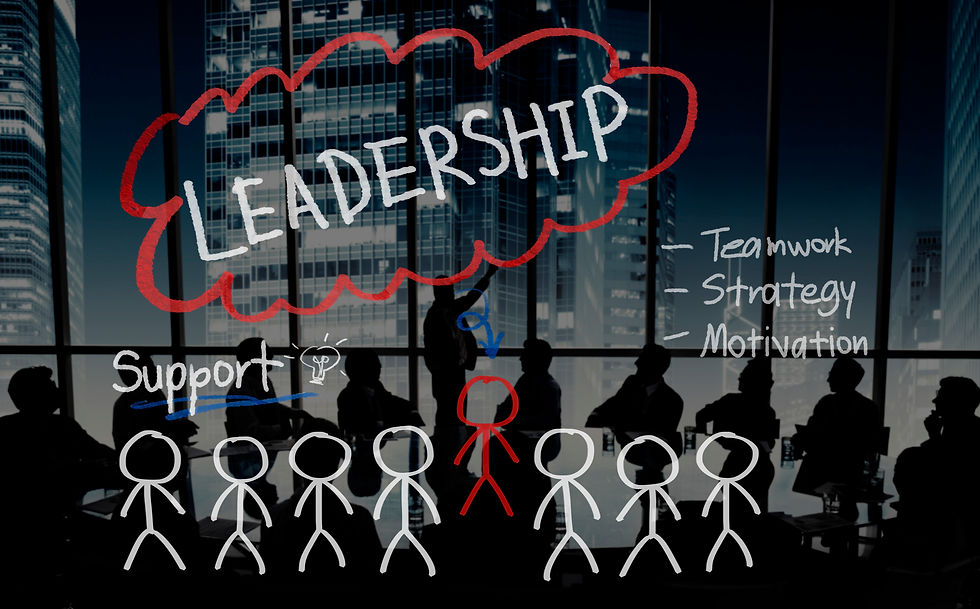The Checkout Disconnect: Why Soft-Spoken Cashiers Create Barriers for Shoppers with Hearing Loss
- Brian Goodwin
- 7 days ago
- 13 min read

For many, a trip to the store is a simple, even enjoyable, errand. A shopper might have a wonderful experience—they find everything they need, the aisles are well-organized, and a sense of accomplishment settles in as they head to the checkout. But for millions of people with hearing loss, this final point of contact is where an otherwise positive experience can completely unravel. The cashier speaks softly, their voice swallowed by the store's ambient noise, and a simple transaction morphs into a moment of high-stress anxiety and frustration.
This common interaction is far more than a minor inconvenience. It represents a significant "experience disconnect" for the nearly 50 million Americans living with some degree of hearing loss. This disconnect transforms a place of commerce into a source of stress, highlighting a critical gap in customer service accessibility that businesses can and must address. Understanding the anatomy of this frustrating transaction, its profound psychological toll, and the practical strategies available to both consumers and retailers is the first step toward creating a truly inclusive shopping experience for everyone.
The Anatomy of a Communication Breakdown
The difficulty experienced by a hard-of-hearing customer at the checkout counter is not a single problem but a convergence of factors. It is a perfect storm of auditory, physical, and social challenges that turns a routine task into a formidable hurdle.
The Soft-Spoken Cashier
The primary trigger is often the cashier's quiet manner of speaking. This is not to assign blame to an employee who may be naturally soft-spoken, but to identify their speech as the initial barrier. For individuals with hearing loss, particularly the common high-frequency type, soft speech is often perceived as indistinct mumbling. This immediately sets the stage for misunderstanding, forcing the customer to strain to catch even the most basic information, such as the total amount due or a question about a rewards program.
The Hostile Soundscape
Retail environments are notoriously challenging acoustic spaces. Hard floors, high ceilings, and glass storefronts cause sound to reverberate, creating a cacophony of background noise. The hum of refrigeration units, the distant chatter of other shoppers, overhead music, and sudden public address announcements all combine into a hostile soundscape. Even the most advanced hearing aids can struggle to isolate a single, quiet voice from this barrage of competing sounds. This forces the person with hearing loss to expend a tremendous amount of mental energy simply to focus, a condition known as listening fatigue.
Physical Barriers
In recent years, new physical barriers have exacerbated the problem. Plexiglass shields, installed for health and safety, muffle sound and critically obstruct the view of the cashier's face. This impedes lipreading, a tool many people with hearing loss rely on to supplement what they hear. The standard distance across a checkout counter further weakens the speech signal, making it even harder to decipher.
The Transactional Pressure
The checkout line is an inherently high-pressure social situation. There is an unspoken expectation of speed and efficiency. For a person struggling to hear, the fear of holding up the line, of drawing impatient glances from others, or of being perceived as difficult or "slow" adds a thick layer of social anxiety. This pressure can lead customers to nod and pretend they have understood rather than ask for yet another repeat—a common coping mechanism that can lead to transactional errors or missed information.
The Immediate Emotional Fallout
The result of this communication breakdown is a rapid cascade of negative emotions that can sour the entire shopping trip:
Frustration: A dual frustration arises—at not being able to hear and at the situation for being so difficult.
Embarrassment: Having to ask "What?" or "Could you repeat that?" multiple times can feel deeply embarrassing, especially in a public setting.
Anxiety: A wave of anxiety can hit as the person worries about misunderstanding the total, missing a crucial question, or appearing incompetent to those around them.
Isolation: Perhaps the most profound feeling is one of isolation—a sense of being disconnected from a simple, everyday human interaction that everyone else seems to navigate with effortless ease.
The checkout is the "last mile" of the customer journey, and its failure has a disproportionate impact on the customer's overall perception of the brand. Psychological principles show that the end of an experience heavily influences our memory of it. Even if the preceding 99% of the shopping trip was positive, a negative, high-stress checkout will disproportionately sour the entire memory. This creates the "experience disconnect" where a retailer believes it is providing good service, yet for a significant segment of its customer base, the final, lasting impression is one of frustration and inaccessibility. This directly impacts customer loyalty, a critical factor for retention, as a Microsoft report found that 97% of customers cite accessible customer service as vital to their brand loyalty.
This problem often remains invisible to the retailer. People with hearing loss frequently develop coping mechanisms to avoid conflict or embarrassment, which can include simply not speaking up or avoiding the situation altogether. Research indicates that only an estimated 4% of dissatisfied customers ever give feedback to the offending company. Consequently, a retailer may have no direct data indicating a problem. They can track transaction times, but not a customer's internal state of anxiety. The only data the retailer receives is silent: the gradual loss of a customer who has decided the cognitive and emotional effort of shopping there is simply too great. This makes proactive training and environmental design the only effective solutions.
More Than an Annoyance: The Cumulative Psychological Toll
The stress of a single difficult checkout interaction may seem fleeting, but for someone with hearing loss, these moments are not isolated incidents. They are recurring micro-aggressions that, over time, contribute to a significant and well-documented psychological burden.
The Concept of Listener Fatigue
Every time a person with hearing loss strains to understand speech in a noisy environment, their brain is working overtime. This intense effort, known as listener fatigue, is a state of mental and physical exhaustion that results from the brain expending extra energy to process and interpret sound. A study from Vanderbilt University underscored this cognitive load, finding that individuals with hearing loss had better word recall and reaction times when wearing their hearing aids, demonstrating how much mental resource is consumed by the act of hearing. Each difficult transaction at a checkout counter is a small but significant drain on a person's finite cognitive resources for the day, leaving them feeling depleted and exhausted from a simple errand.
A Catalyst for Social Withdrawal
Consistent negative reinforcement from experiences like the checkout encounter can lead to avoidance behaviors. After enough frustrating, embarrassing, or stressful shopping trips, a person may begin to dread running errands. This self-imposed reclusiveness is a direct pathway to social isolation and loneliness, conditions that are themselves linked to a host of negative health outcomes. The person may feel like an observer in life rather than an active participant.
The Link to Anxiety and Depression
The connection between hearing loss and mental health is not anecdotal; it is strongly supported by research. The daily strain of communication difficulties is a powerful catalyst for anxiety and depression.
A landmark study by the National Council on Aging involving 2,300 hearing-impaired adults found that those with untreated hearing loss were significantly more likely to report depression, anxiety, and paranoia compared to those who wore their hearing aids.
Further research published in Gerontology revealed that people with hearing loss are 47% more likely to experience symptoms of depression.
The constant worry about missing important information, the fear of misunderstanding others, and the feeling of being a burden directly feed into generalized anxiety. The retail environment, a place most people navigate without a second thought, becomes a recurring trigger for these powerful and distressing emotions.
Impact on Confidence and Identity
Hearing loss can steadily erode a person's self-confidence and sense of independence. The need to constantly struggle through simple tasks like paying for groceries or asking for help can make one feel "less than competent". This experience is often part of a larger grieving process associated with hearing loss, where individuals may grapple with denial, anger, and depression as they come to terms with a fundamental change in how they interact with the world and, consequently, a change in their own identity.
Inaccessible public spaces, like many retail stores, can function as a form of societal "gaslighting." When communication fails due to a soft-spoken cashier and poor acoustics, the immediate social cues—an impatient sigh from someone else in line, the cashier's own potential frustration—can implicitly place the "blame" on the person who cannot hear. The customer may internalize this, feeling shame and inadequacy, and start to believe that they are the problem. This repeated experience reinforces a sense of being "different" or "broken," directly contributing to the loss of confidence and increased risk of depression cited in the research. The environment's failure to accommodate is thus perceived as the individual's failure to cope.
Furthermore, the cognitive effort required to navigate an inaccessible store directly competes with the cognitive tasks of shopping. Hearing is a brain function; it involves translating noise into recognizable sound. When hearing is impaired, the brain works harder, leading to listener fatigue. At the same time, shopping requires its own cognitive resources: comparing prices, reading labels, making choices, and sticking to a budget. A shopper with hearing loss is therefore performing two demanding cognitive tasks at once. This dual load leads to exhaustion more quickly, can result in poorer purchasing decisions, and transforms the entire experience from a simple errand into a draining chore.
Empowering the Consumer: A Toolkit for Self-Advocacy
While retailers have a clear responsibility to create accessible environments, consumers with hearing loss can also employ a range of strategies to regain a sense of control and reduce the stress of shopping. Taking a proactive approach can transform a potentially negative experience into a manageable one.
Strategic Planning
Often, the best defense is a good offense. A little planning before leaving home can make a world of difference.
Timing is Everything: Whenever possible, shop during off-peak hours. Mid-mornings on weekdays are typically quieter and less crowded than evenings or weekends. Some retailers, like ASDA and Tesco in the UK, have instituted "Quiet Hours" with reduced noise and lighting, a model that provides a more comfortable environment for those with sensory sensitivities, including hearing loss.
Do Your Homework: Arrive at the store prepared. A detailed shopping list, perhaps even organized by the store's layout, can minimize the time spent searching and reduce the need to ask for directions in a noisy setting. A quick phone call ahead of time to ask if the store has an assistive listening system, like a hearing loop, at the checkout can also help you choose where to shop.
Choose Your Venue Wisely: Big-box stores with cavernous ceilings and hard surfaces are acoustically challenging. Smaller, locally-owned shops often have better acoustics, fewer shoppers, and a less overwhelming atmosphere, making communication easier.
In-the-Moment Communication Tactics
Once in the store, several techniques can facilitate clearer communication at the checkout.
Be Your Own Advocate: This is the most crucial step. Begin the interaction by confidently and politely stating your needs. A simple, "Hi, I have hearing loss. Could you please speak clearly and face me when you talk?" can immediately change the dynamic of the conversation. This is not an apology but a helpful instruction. For those who prefer a more subtle approach, pin badges or wristbands that indicate a hearing loss are also available.
Control the Conversation: Use "closed" questions that require a simple "yes" or "no" answer, which are much easier to understand and lipread than open-ended questions. For example, while looking at the register display, ask, "Is the total fifteen dollars and fifty cents?" instead of "What is the total?".
Leverage Visuals: Don't rely solely on hearing. Point to the customer-facing screen to confirm the price. Keep a notes app open on a smartphone or carry a small, erasable whiteboard to write messages if verbal communication breaks down completely. Paying by card also provides a clear visual of the total before the transaction is finalized.
Optimizing Your Technology
Hearing aids and other devices are powerful tools, but they work best when optimized for the situation.
Hearing Aid Preparedness: Before heading out, ensure hearing aid batteries are fresh, and always carry a spare set. It is advisable to speak with an audiologist about creating a specific program or setting for noisy environments. Many modern hearing aids feature directional microphones that can be programmed to focus on the sound coming from directly in front, which can help isolate the cashier's voice from surrounding noise.
Telecoil and Hearing Loops: Many people are unaware of one of the most powerful features in their hearing aids: the telecoil. A telecoil is a tiny copper wire that, when activated, can pick up magnetic signals. When a store has a hearing loop system installed at the checkout, it broadcasts a magnetic signal from the cashier's microphone. By switching their hearing aid to the "T-setting," a customer can receive that sound directly in their ear, crystal clear and free from all background noise. Consumers should ask their audiologist to activate their telecoil and always look for the international symbol of access for hearing loss (a blue sign with an ear and a "T") in stores.
The act of self-advocacy is more than just a communication tactic; it is a therapeutic act. The psychological impact of hearing loss often includes a loss of confidence and a feeling of helplessness. Passively avoiding difficult situations is a common response to this feeling. However, proactively stating one's needs—"I have hearing loss, please face me"—is an assertive behavior that reframes the interaction. It shifts the dynamic from "I can't hear you," which can feel like a personal deficit, to "Here is how we can communicate successfully," which is a collaborative instruction. This small act of taking control can build confidence over time and reduce the anxiety associated with these situations, shifting the locus of control back to the individual.
The Retailer's Responsibility: Building an Accessible Checkout
Creating a truly inclusive shopping experience requires a proactive and multi-layered approach from retailers. It is about fostering a culture of accessibility that goes beyond mere compliance and recognizes the immense value of serving every customer well.
Foundational Staff Training: The Human Element
Technology can solve many problems, but the human element remains the cornerstone of good customer service.
Disability Etiquette is Customer Service Excellence: All customer-facing staff should be trained on the basics of communicating with hard-of-hearing individuals. Key points include: getting the person's attention before speaking (with a wave or a light tap on the shoulder if necessary), facing them directly, speaking clearly at a moderate pace (shouting distorts sound for hearing aid users and can seem aggressive), and not covering their mouth.
Patience and Empathy: Training should emphasize that interactions may take more time, and that patience is a critical component of good service. Staff should be taught to never dismiss a customer's question with "never mind" or act burdened by the need to repeat themselves. A better strategy is to rephrase a sentence using different words if the first attempt is not understood.
Empower Employees: Give staff the tools and autonomy to solve communication challenges on the spot. A small, inexpensive whiteboard and marker at every register is a low-cost, high-impact solution that empowers both the employee and the customer. Train employees to handle the situation themselves rather than immediately "passing the buck" to a manager, an act which can make the customer feel like a problem to be solved rather than a person to be served.
Optimizing the Physical Environment
Simple changes to the store's physical environment can significantly reduce communication barriers.
Acoustic Considerations: Retailers can take steps to mitigate overwhelming background noise. Lowering the volume of in-store music, especially near checkout areas, is a simple and effective measure. For new builds or renovations, considering sound-dampening materials like acoustic ceiling tiles or soft furnishings can dramatically reduce echo and improve speech intelligibility.
Lighting and Sight Lines: Good, non-glare lighting is crucial for lipreading and seeing the facial expressions that provide vital context to speech. Checkout areas should be well-lit, and care should be taken to ensure that displays or other objects do not block the sight lines between the cashier and the customer.
Investing in Point-of-Sale Accessibility
Technology offers powerful solutions for bridging the communication gap at the point of sale.
POS System Features: Modern Point-of-Sale (POS) systems can be designed with accessibility in mind. Features like large, high-contrast text on customer-facing displays, simplified user interfaces, and even audio feedback for customers with low vision demonstrate a comprehensive commitment to serving all customers.
Assistive Listening Systems (ALS): For checkout counters, installing an assistive listening system is a transformative step.
Hearing Loops: A hearing loop (also known as an induction loop) is widely considered the gold standard for accessibility in a fixed location like a checkout. It uses a magnetic field to transmit sound from a microphone directly to the telecoil in a customer's hearing aid or cochlear implant. This technology provides unparalleled clarity by eliminating the detrimental effects of distance and background noise.
Next-Generation Solutions: For more complex or private interactions, such as at a pharmacy counter or customer service desk, Video Remote Interpreting (VRI) can be an excellent option. This service uses a tablet or computer to connect the customer and employee with a live, remote sign language interpreter in real-time. Newer technologies like Wi-Fi audio systems, which allow customers to stream audio directly to their own smartphones, also offer promising new avenues for accessibility.
A Retailer's Accessibility Checklist: From Low-Tech to High-Tech Solutions
Implementing accessibility measures can seem daunting, but it can be approached in phases. Significant improvements can be made immediately with little to no cost, providing a foundation for future investments in technology. This tiered approach empowers retailers of all sizes to begin improving accessibility now.
Category | Behavioral / Low-Cost Solutions | Technology / Investment Solutions |
Staff Training | - Train staff to face customers, speak clearly, and not shout. - Role-play interactions with hard-of-hearing customers. - Teach the phrase, "How can I best communicate with you?" | - Utilize online disability awareness training modules from organizations like EARN. - Hire an accessibility consultant for in-person workshops. |
Checkout Counter | - Keep a small whiteboard or erasable tablet and marker at each register for written communication. - Ensure the POS screen facing the customer is large and clear. | - Install a hearing loop system at one or more designated checkouts and display the official sign. - Provide a tablet with access to on-demand Video Remote Interpreting (VRI) for complex interactions. |
Store Environment | - Lower the volume of background music, especially near checkout areas. - Implement designated "Quiet Hours" with reduced noise and lighting. | - Invest in acoustic panels or other sound-dampening materials to reduce echo. - Upgrade to a POS system with accessibility features like adjustable text and voice output. |
Communication | - Ensure staff know how to accept calls from 711 relay services. - Add an accessibility statement to the company website. | - Explore emerging technologies like Auracast™ broadcast audio for store-wide announcements. - Offer text-based customer support options. |
Conclusion: Closing the Gap, Building Loyalty
The checkout disconnect experienced by customers with hearing loss is not a problem of malice, but of awareness. The gap between a retailer's good intentions and a customer's frustrating reality is significant, but it is entirely bridgeable through a combination of empathy, training, and technology.
Creating an accessible retail experience is not simply about legal compliance with the Americans with Disabilities Act (ADA) or a demonstration of social responsibility. It is a powerful business strategy with mutual benefits. For the customer, it means a reduction in daily stress, a weapon against social isolation, and a marked improvement in their overall quality of life and mental well-being. For the business, it builds profound customer loyalty, enhances brand reputation, and unlocks the considerable economic power of a vast and historically underserved market. An accessible business is, by its nature, more user-friendly for everyone, including older adults, parents with young children, and non-native speakers.
Advocacy organizations like the Hearing Loss Association of America (HLAA) continue to play a vital role, pushing for greater communication access in all public spaces and working with industry to develop better solutions. Their work, combined with retailer initiative and consumer self-advocacy, points toward a more inclusive future. Innovative companies like Apple and Target are already leading the way, integrating accessibility into the core of their customer experience. Emerging technologies like Auracast™ broadcast audio promise a future where public sound, from gate announcements in an airport to checkout conversations in a store, is seamlessly and directly accessible to anyone with a compatible device.
The ultimate goal is a shopping experience where the checkout is not a barrier, but a smooth, positive, and respectful final step in a great day for all customers. By closing the communication gap, retailers do more than just complete a sale; they build a lasting connection.



Comments